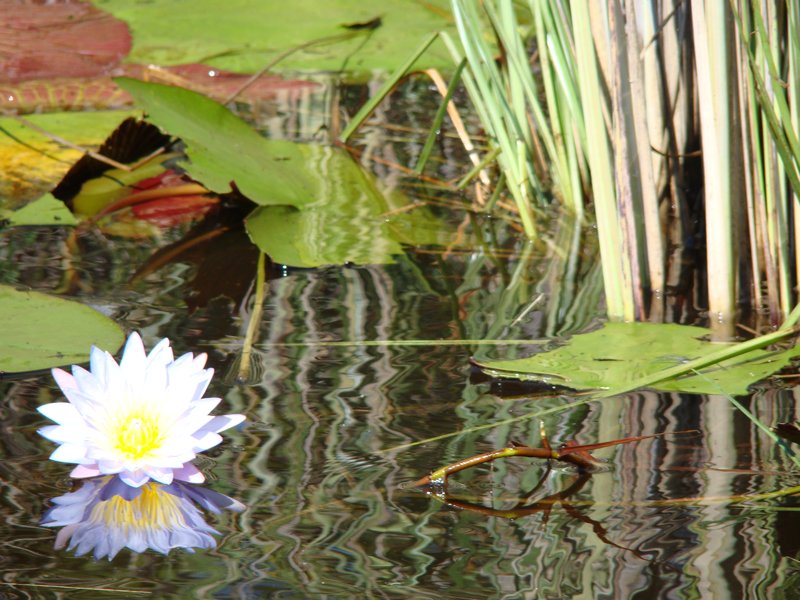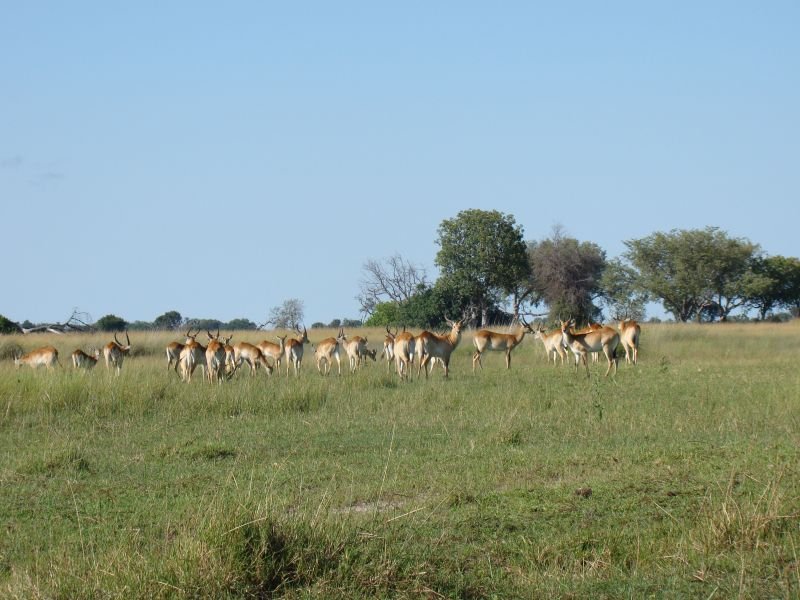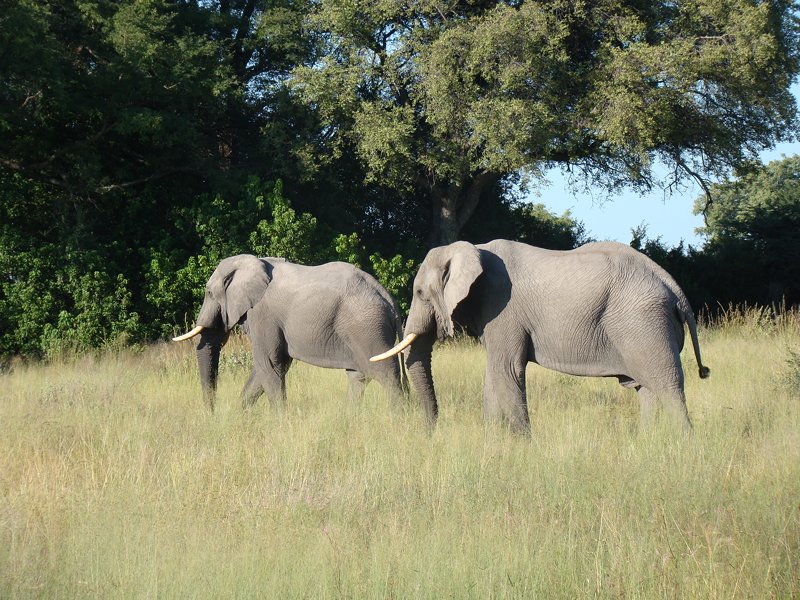The Experiences of Paul & Henrietta Delahunt-Rimmer
Botswana the Country [MAP]

Day lily flower
Botswana is situated in Southern Africa with South Africa to the south, Namibia to the west, Angola and Zambia to the north and Zimbabwe to the east so is therefore landlocked. Covering approximately 585,370 km² the country's highest point is 1,489 metres and the lowest is 513 metres above sea level. Crossing the Tropic of Capricorn most of the country has a tropical climate. The terrain mostly consists of sand sheet with rocky outcrops with the Great Salt Pans and the Okavango Delta being large exceptions. The southeastern part of Botswana is less flat and rockier with sandstone hills leading to large rivers; this is where most agriculture is centred along with most of the population.
Archaeological evidence suggests that the ancestors of the Khoisan people were settled in the area between 60,000 and 3,000 years ago. It is also thought that at various times hunter-gatherers from the San people also grazed livestock in the area during wet periods.

A herd of impala grazing
Around 1,000 B.C. new pastoral farming methods and practices had spread south, along with the Bantu-speaking farmers. With the Bantu came Iron Age technology including iron tools and weapons. By 200 B.C. the Khoisan people were either assimilated into the migrant groups or pushed out into areas that could not be farmed. The available evidence suggests a situation developed where communities lived peacefully side-by-side leading to some intermarriage which resulted in today’s Batswana people being a mixture of Bantu and Khoisan. The archaeological record suggests a continuing pattern of migrations of different tribal groups up to the time when colonial authorities started to impose artificial borders onto the indigenous peoples.

Two elephants joining the herd
The first Europeans to visit Botswana were a mixture of adventurers, hunters and missionaries who funded their expeditions by trading mostly in ivory. This trade eventually led to the introduction of money and the decline of bartering. The people therefore needed to adapt to this new system and earn this new money for themselves in order to trade and live. When they had run out of things to sell they were forced to emigrate to find work, mostly in South African mines. Meanwhile missionaries had succeeded in converting the Batswana people to Christianity and were attempting to also change their local customs; the medicine men being particularly targeted with limited success. Even to this day the local people turn to the medicine men before modern doctors. However, on the positive side the missionaries introduced practical benefits such as education, tools such as the wagon and plough and irrigation methods. The wives of missionaries passed on sewing, cookery, nursing and midwifery skills.

Cooking the day’s catch
In the 1750's Southern Africa experienced a period of major disruption as trading and raiding for cattle, ivory and slaves resulted in war and migration. By the 1840's new organised states controlled by Chiefs or Kings had been formed, called the Tswana states.
The first king of Botswana was Khama the Great, who was baptised by Dr David Livingstone and consequently helped to change the customs and beliefs of his people. At this time roads were being built which brought trade benefits, but also brought with them Boer trekkers from the south.
By the 1850's the Batswana leaders in Botswana were starting to feel threatened by the Boers, who had been left alone by the colonial countries to farm the Transvaal area of South Africa. Their appeals to Great Britain for protection fell on deaf ears as the British could see no threat to their own interests. Fortunately for the Batswana in 1884 Germany annexed South West Africa (Namibia) causing alarm bells to start ringing with the British; fearing that if the Germans linked up with the Boers they could block all access to the African interior from the British. Thus, in 1885 the British finally granted the protection they had been asking for, and so Botswana became the British Protectorate of Bechuanaland.

Seasonal floodplain in flood
By 1910, with the changing political situation in Africa and the formation of the Union of South Africa, the British planned to transfer the Protectorate to the Union. However, for many reasons the Batswana did not want union with South Africa and wished things to stay as they were. The war years saw many changes politically in South Africa, so had the attitude of the British towards South Africa, and by 1955 they had changed their minds about handing over the Protectorate to them. Between 1955 and 1966 was a period of gradual progression towards independence; in 1961 a legislative council was set up along with an interim constitution and limited elections.
Local politics soon developed rapidly and saw the more radical groups gradually being supplanted by the more conservative Botswana Democratic Party (BDP) Financial grants from the British allowed for the necessary development to take place prior to full independence including the construction of a new administrative capital at Gaborone. There was at this time a high degree of consultation and co-operation between the people of Botswana and the British government.
The first full elections took place on 1st March, 1965 and a new administration was set up with the retention of only a few senior British civil servants. On 30th September, 1966 the fully independent Republic of Botswana emerged with Sir Seretse Khama (Khama the Great’s grandson) as its first President.

Sir Seretse Khama
Seretse Khama took leadership of a poor country with a largely illiterate population. With the help of the discovery of diamonds in 1967 and with a prudent, stable and conservative government Botswana’s economy has steadily grown. Botswana today is highly regarded by the World community, has managed to maintain a high growth rate and with prudent use of her diamond revenues has become a prosperous ‘middle-income’ country. There has been much improvement in the basic social services such as education and healthcare. As well as diamonds, the two other main sources of income are beef, which is a major export, and low impact, high revenue tourism.